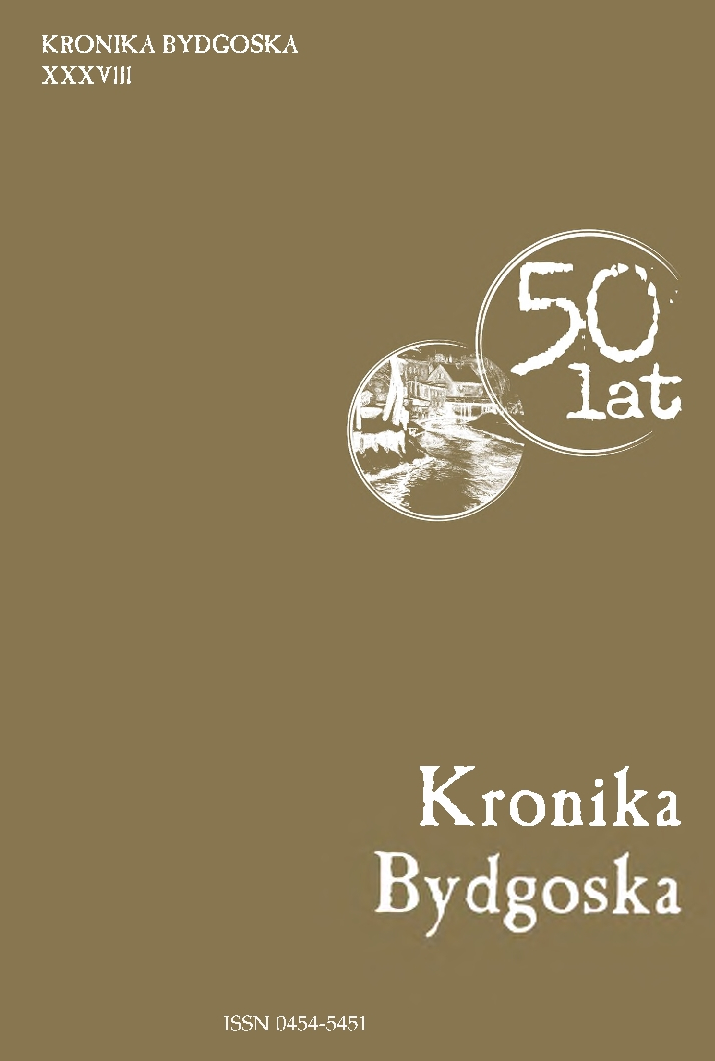Kulturowa rola bydgoskiej hydrografii w ujęciu historycznym i literackim
DOI:
https://doi.org/10.34767/KB.2017.38.01Słowa kluczowe:
Bydgoszcz, Brda, Wisła, hydrografia, kultura, historiaAbstrakt
The article regards the cultural role of Bydgoszcz hydrography from a historical perspective. In old times, the layout of the hydrographic system of the Bydgoszcz area was conducive to long-distance travels of hunting tribes in the Upper Paleolithic. Along with stabilization of the Holocene climate, it attracted representatives of hunting and fishing Mesolithic cultures, followed by settled Neolithic communities. During the Bronze Age and Early Iron Age, settlement gradually developed in the proximity of smaller water bodies feeding the Brda and Vistula rivers within their Bydgoszcz courses. During the Roman period, the Brda served as a trail connecting the regions of Pomerania and Wielkopolska. Starting from the Middle Ages, local people had been using all advantages of the Bydgoszcz hydrographic network. It can be confirmed by discoveries of dugout canoe and Vistulan punt wrecks in downtown area. Close relations between the Brda and Vistula rivers and the Old-Polish culture are best described by a poem dedicated to “ship launches on the Vistula” called Flis, which is the traditional name of the water body and district situated in the western part of Bydgoszcz.

